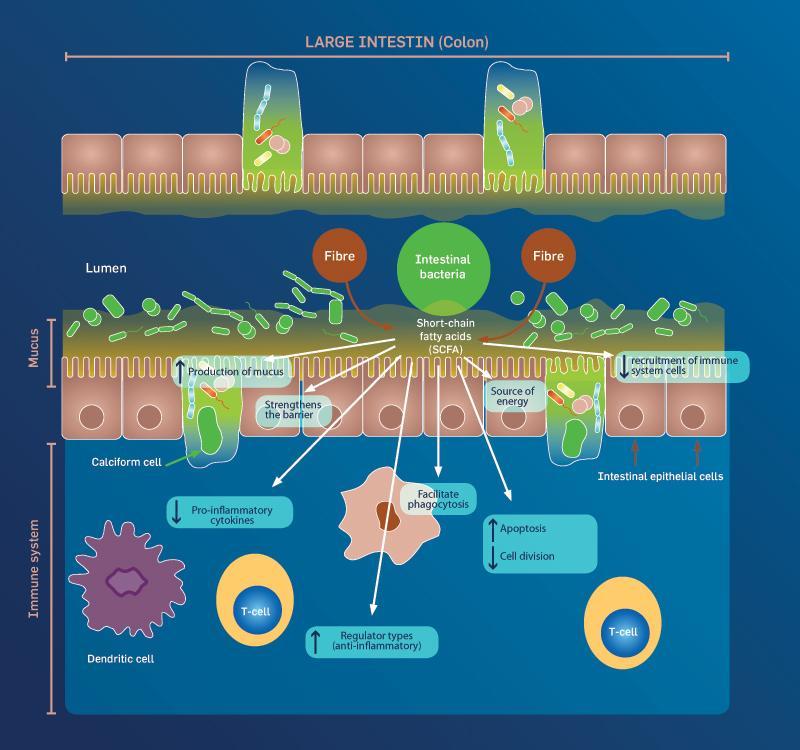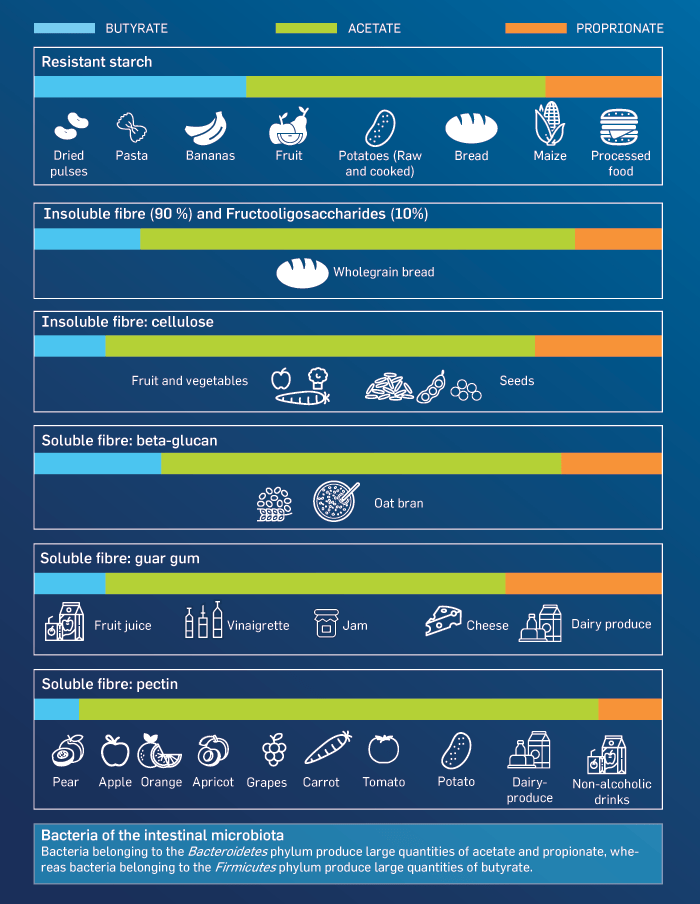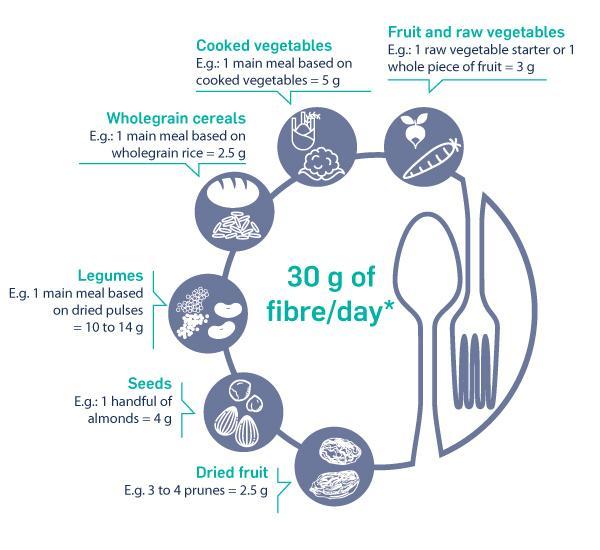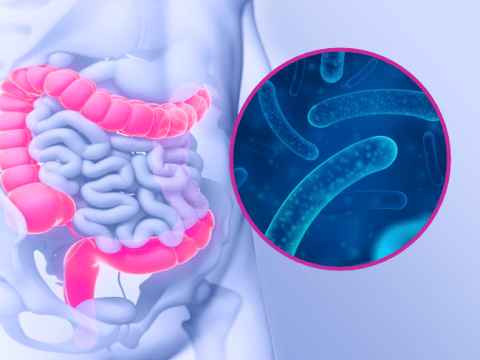From dietary fibre to the production of short-chain fatty acids
Dietary fibre consists of a sequence of sugar molecules (called polysaccharides) which cannot be digested or absorbed by the human body. Consequently, this fibre is not broken down as it passes through the upper gastrointestinal system as it is resistant to the various processes associated with digestion (action of gastric juices, release of digestive enzymes, etc.).
When the fibre reaches the small intestine, it comes into contact with the bacteria that makes up the microbiota, whose numbers gradually increase as the fibre moves towards the colon. These intestinal strains of bacteria are able to digest dietary fibre.
This digestion process produces compounds which are beneficial for the body, such as short-chain fatty acids (SCFA): butyrate, acetate and propionate. These compounds are also called postbiotics.

SCFA are quickly absorbed and contribute to the body’s energy metabolism, and particularly provide energy to the epithelial cells of the colon, whose main role is to assimilate water and electrolytes. Postbiotics are particularly valuable as a means of recovering energy (accounting for 5 to 15% of total calorific requirements in humans) from the dietary fibre which is not digested in the small intestine. Indeed, the nutrients absorbed are notably used to produce energy, in the form of ATP molecules, present in all cells and necessary for the transfer of energy.

Short-chain fatty acids are generally produced more or less in the following proportions: 60% acetate, 20% propionate and 20% butyrate. The production of SCFA varies as a function of the type, quantity and composition of the dietary fibre available, and also depends on the composition and functioning of the intestinal microbiota4.
Butyrate stands out from the other two SCFA in terms of the beneficial effects it has on the body.
Although it is produced in smaller quantities that acetate, butyrate is absorbed in sufficient quantities to play an important role in cell signalling. Indeed, butyrate stimulates the endocrine cells in the intestine, which triggers the production of specific hormones and thus acts on many of the body’s functions.
Butyrate: a postbiotic with numerous beneficial effects
Compared with the other two SCFA, butyrate is the main source of energy for the epithelial cells of the colon. It thus influences a wide range of cell functions relating to the colon and to health.
Butyrate regulates the intestinal barrier and plays a role in satiety and in oxidative stress.2
Recent studies have highlighted the beneficial effects of butyrate on the intestinal ecosystem. One of them revealed that a reduction in the production of butyrate may be associated with a number of inflammatory and functional diseases such as irritable bowel syndrome and Crohn's disease.
Finally, more recent research has revealed the impact of butyrate on the brain via the brain-gut axis1 and on the peripheral tissues and organs, including the liver, skeletal muscle and adipose tissue.
Some food supplements based on butyrate can be used to re-establish sufficient concentrations of butyrate and thus help to maintain good intestinal functioning. They might also have beneficial effects on certain digestive pathologies.
What types of fibre should be prioritised to maintain the balance of the intestinal microbiota?
The production of SCFA varies as a function of the types of fibre present and of the composition of the microbiota.

Insoluble fibre (e.g. cellulose) has a relatively low fermentability; however, it is associated with an increase in stool volume and a reduction in transit time through the colon. Soluble fibre is highly fermentable and thus generates large quantities of butyrate in the colon.
How to obtain 30 g of fibre a day from your diet.

An insufficient consumption of fibre reduces the production of SCFA and may lead to intestinal dysbiosis and chronic disease. Consuming 30 g of fibre a day is enough to allow the body to produce SCFA and to ensure that the intestinal microbiota is kept in balance. This fibre provides effective nourishment for the bacteria and thus promotes SCFA production. SCFA in general, and butyrate in particular, play an essential role in preventing: intestinal dysbiosis; inflammation of the mucous membranes; hyperpermeability and immune system imbalances.






